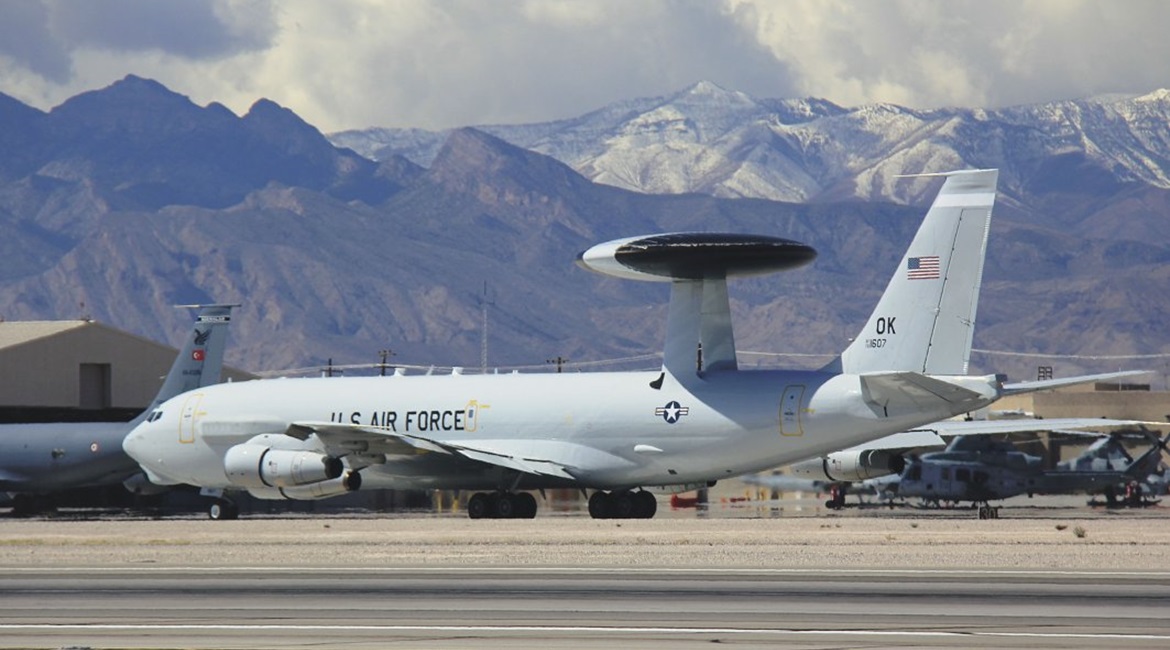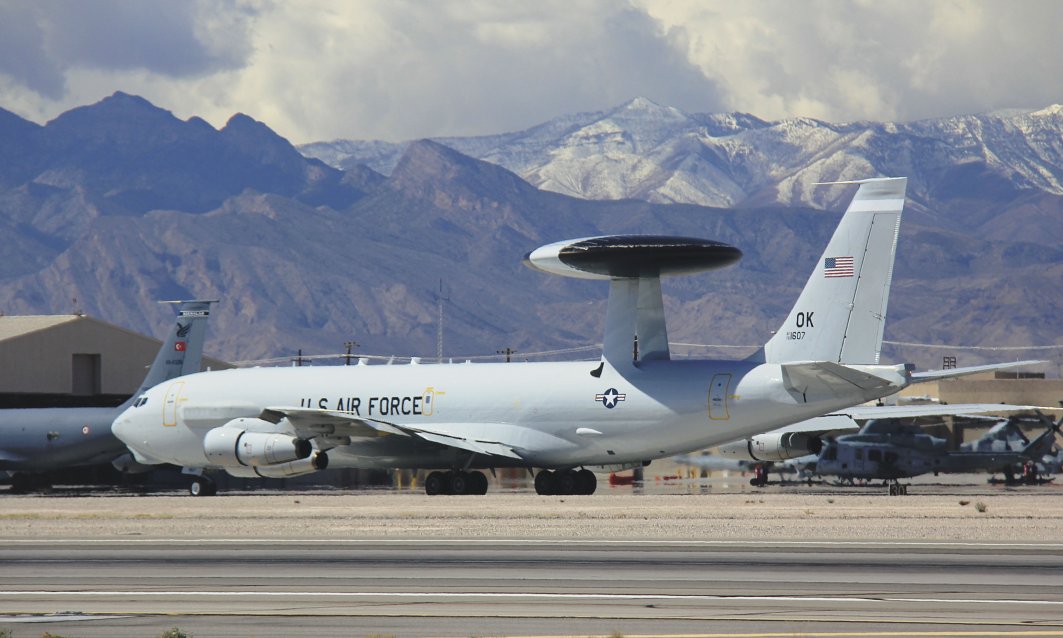
The US Department of Defense (DoD) has contracted Boeing to complete full-rate production of the Block 40/45 upgrade for the service’s E-3 Airborne Warning and Control System (AWACS) aircraft.

A USAF Boeing E-3G Sentry AWACS at ‘Red Flag 16-02’. Boeing has been contracted to bring the last of the service’s 31 AWACS aircraft up to this enhanced Block 40/45 standard. (Jane’s/Gareth Jennings)
The contract, announced on 13 February, is valued at USD99.9 million and will run through to fiscal year (FY) 2024. Work will be performed at Tinker Air Force Base in Oklahoma.
The Block 40/45 Mission System Upgrade is the largest in the history of the AWACS programme. Building on earlier Block 20/25 and Block 30/35 efforts, the Block 40/45 is essentially a mission computing systems upgrade that covers hardware, in the form of a new suite of current state-of-the-art flat-screen computers, as well as the necessary software. This takes the aircraft very much into a Windows type of environment, enhancing the system’s networking capability while improving the aircraft’s reliability and lowering life-cycle costs.
In addition, the upgrade will provide for increased processing power to enable better operation of the fleet’s advanced battle management tools, such as Automatic Air Tasking Orders and Airspace Co-ordination Order updates. The aircraft’s Multi-Sensor Integration (MSI) process, which automatically integrates data from on- and off-board sources such as radar and identification friend-or-foe (IFF) systems, electronic support measures, and Link 16, is also upgraded under the process, with the MSI’s open system and lean architecture enabling rapid software upgrades and requiring less hardware. As part of the upgrade the US Air Force (USAF) is also replacing the E-3’s AN/APX-103C radar with the AN/UPX-40, which was designed to eliminate ground clutter to better detect, identify, and track low-flying aircraft.
Looking to read the full article?
Gain unlimited access to Janes news and more...






